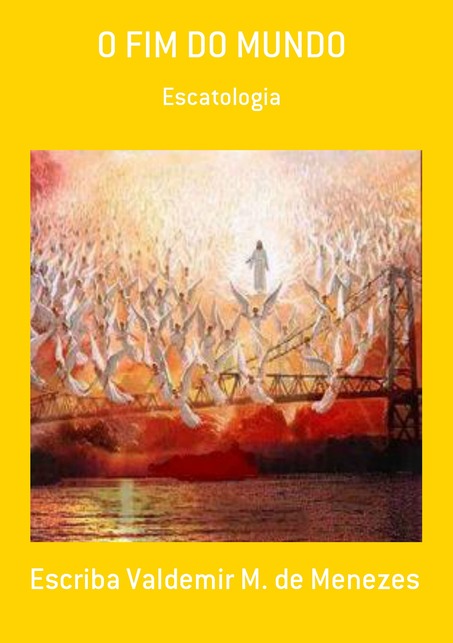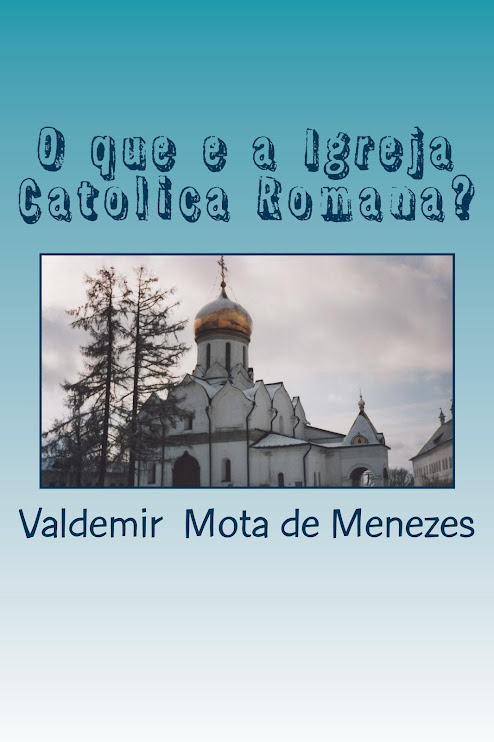The scribe of Valdemir Mota Menezes read the text of the epic of creation on the website below:
http://www.sron.nl/~jheise/akkadian/enuma1_expl.html
________________________________________
The first primaeval beings: Tiamat and Apsu and their offspring
In the epic of creation Tiamat is the first primaeval being, primaeval Chaos, a kind of primordeal godlike creature that existed before the gods were created. These beings were thought of as being monstrous and having cosmic dimensions. In Akkadian tiamat means 'sea' and is used for the Perzian Golf ('Nether sea') and the Mediterranean Sea ('Upper sea'), 'nether' and 'upper' with respect to the course of the rivers Euphrates and Tigre.
Tiamat is the (female) personification of 'Sea' and 'sea water'. She appears as such in other epics as well. Names like Tiamat and the other primaeval beings to be mentioned (Apsu, Mummu) are missing the determinative sign for divinity .

The reason is unknown but should not be seen in relation to their wicked disposition, because e.g. names of demons do carry this determinative sign.
Apsu, the second primaeval being that existed before the creation of heaven and earth, is the male personification of subterranean waters. The personification of Apsu (as somebody who acts and speaks) is unique in the epic of creation, probably induced by the personification of Tiamat. In other texts Apsu is used in the objective/impersonal sense as the 'underground water', representing the depot of precipitation and mineral water, something that can be reached by digging a hole. It is the domain of the (water)god Ea, who controls this water supply. The Apsu feeds the rivers with respect to their continuous water supply. The seasonal changes and the precipitation itself are the domain of the (weather)god Adad; Ea and Adad both are responsible for the fertility of the fields. On cylinder seals one sees the Apsu as a shrine with Ea seated on his throne with running water aside.
The Apsu borders the underworld, the residence of the deceased, the domain from which no return is possible. In other contexts Apsu is sometimes equivalent with the underworld.
Tiamat and Apsu create their offspring. Apsu is called the begetter of the great gods in line 29 of tablet I. The first pair of children are
Lahmu and Lahamu. These names ('the hairy one' or 'muddy') known in Sumerian times in the 21st century BC (texts of Gudea, Cylinder A). They have three pairs of curls. Lahmu is the gatekeeper of the Apsu, seen as the domain of the god Ea (Sumerian Enki). In other texts there are more Lahmu's, sometimes 8, but also 50. Gudea (on lay Cylinder cylinder A) speaks about 50 Lahama's of the engur (approx. syn. with abzu). This large number is in this creation epic Enüma elish reduced to the pair Lahmu and Lahamu (man and wife? It is not written down!) because of the analogy in this theogony to other pairs.
Anshar and Kishar Sumerian an 'sky', 'heaven'. Anshar (masculine) 'whole sky' paired with Kishar (Sumerian ki 'earth') is presented as father of the heaven god Anu.
(to be continued)
________________________________________
Explanation of the first lines
________________________________________
For cuneiform text and transcription click here,
And see translation in English.
A translation of all tablets is given elsewhere on the net.
________________________________________
I.1

e-nu-ma e-lish la na-bu-ú shá-ma-mu
enüma elish lä nabû shamämü
'When above heaven was not (yet) named'
Enüma is the temporal conjunction 'when'; also inüma and inu.
I use ï, ä, ü to indicate long vowels for lack of anything better within the html-limitations. They are usually written with a macron on top of the vowel.
sh denotes the letter shin as in shashlick
Contracted vowels are transcribed with circonflex, like in many languages. They are pronounced as a long vowel as compensation for the lost consonant. E.g. French hôpital (long o, < hospital with lost s).
elish is an adverb formed with the ending -ish and associated with elû which is (as verb) 'to be high', as adjective 'high'.
lä is the negation 'not', here with a verb in the so called stative form.
nabû
shamämü is a literary form of the plural shamä'ü or shamû 'sky', 'heaven'
I.2

shap-lish am-ma-tum shu-ma la zak-rat
shaplish ammatum shuma lä zakrat
'(and) below the earth was not pronounced by name'
shaplish 'below' is an adverb formed with the ending -ish from shaplu 'under', 'lower side'.
ammatum is a (rare) literary word for 'earth'; the ending -atum is nominative feminine. It is apparently a feminine word and has the nominative case because it is subject.
shuma is the accusative case for shumu 'name'; it is object in this phrase.
zakrat is a stative form of the verb zakäru(m) 'to speak'. In the static sense translated as a passive: 'is pronounced'. The form of the verb is 3rd person feminine, because the subject 'earth' is feminine. In Akkadian some verb conjugations discriminate between masculine and feminine.
'Above' and 'below' are often used to indicate 'heaven' and 'earth', but sometimes also 'earth' (or 'the world of the living') and 'underworld' (or 'the world of the dead') as a contrasting pair. In combination it could mean 'everywhere'.
I.3

zu.ab-ma resh-tu-ú za-ru-shu-un
abzu-ma rështû zärûshun
'and Apsu, the first one/the ancient Apsu, their begetter
logogram zu.ab, Sumerian Abzu, Akkadian Apsu extended with an enclitic particle -ma. This particle has more functions, but here it has conjunctive force 'and', which (unlike the simple coordinating conjunction u 'and') implies a temporal or logical sequence between two clauses. It may often be translated 'and', 'and then', but other translations may be required by the context.
rështû < rështiu 'eldest (son)', 'first born', 'ancient'; the -t- is not a ''feminine -t-'' but part of an ending -tiu that makes here an adjective out of a noun stem. The meaning is related to rëshu 'head', 'front part', 'upper part', 'beginning'.
The contracted and therefor long vowel at the end is here spelled explicitly with an extra ú as resh-tu-ú
zärûshun < zäriu+ suffix shun 'their'.
zäriu or zëriu is 'begetter', 'offspring', It is a participle. The participle normally functions as a noun and indicates 'the person who...', 'he who ...'.
The possessive pronouns 'my', 'your, 'his',...'their' are in Akkadian expressed as a suffix.
The 3rd person singular 'his' is in Old Babylonian texts usually -shu, but in later times (as here in this text) often written as shú (shu2).
The 3rd person plural 'their' is -shunu often spelled as shu-nu or shú-nu, but here we see the short (apocope) form -shun, spelled as -shu-un.
I.4

mu-um-mu ti-amat mu-al-li-da-at gim-ri-shú-un
Mummu Tiämat mu(w)allidat gimrishun
'(And) maker Tiamat, who bore them all'
logogram for amtu 'virgin' and has only in the combination with ti the phonetic value amat to form the proper name Ti-amat.
Mummu 'clever person', 'a person of genius'; it is a proper name, the craftsman god, Apsu's vizier, usually used as an epithet of the wise god Ea/Enki (later in the text it is explained why). The word is here used as something like 'maker'.
mu(w)allidat is a participle in the socalled D-stem of the verb. The infinitive in the basic stem is (w)alädu (the w in Old Babyloninan time is later falling off). It means (in both stems) 'to bear'. The D-stem often indicates the factitive (expressed with 'to make ...', e.g. the D-stem of 'to be good' is 'to make good').
The participle is 'she who bears', 'begetter'. The participle in all other stems except the basic stem, is formed with the prefix mu-. In the D-stem (D from doubling) the middle radical (the middle consonant of the root) is doubled (here l). The ending -at is for a feminine participle. It is here in the construct form (e.g. no case endings like -um) because it is followed by a noun in the genitive.
gimru is a noun indicating 'totality', here in the construct state genitive gimri- followed by a possessive suffix -shun 'their', litt.: 'their totality'. Forms of gimru are often translated with words like 'all', 'entire'.
I.5

a.mesh-shú-nu ish-te-nish i-hi-qu-ú-ma
mêshunu ishtënish ihïqüma
'(and when they) had mixed their waters together'
a.mesh is logogram for mû 'water' (a plural form, as indicated by the logogram mesh for plural), here in the accusative case (object of 'to mix') mê with an added suffix for the possesive pronoun -shunu 'their', here not in abbreviated form.
ishtënish an adverb 'first', 'equally', also: 'together'
ihïqü present tense (3rd person plural 'they') of the verb with infinitive hâqu < hiäqu 'to mix'
The prefix i- is characteristic for the 3rd person, the ending on long -u marks the plural: 'they' (the subject is Tiamat and Apsu). It is the present tense of the ongoing action ''while they mixed'', so it is not translated in the present tense.
The background of the expression ''mixing their waters'' may be as follows: Tiamat is the personification of the sea and the salt water, while Apsu represents the fresh water. The mixing symbolizes the proces seen in the marshes of the southern part of Mesopotamia (the area where presently the remaining marsh-Arabs are hiding and in the past the culture of the Sumerians had prospered). In the mixing of these waters reed grows. At first floating islands are formed, which are ultimately transformed into new and fertile land, that brings prosperity.
I.6

gi-pa-ra la ki-isc-scu-ru scu-sca-a la she-'u-ú
gipa(r)ra lä kiscscurü scuscä lä she'û
'(but when) pastures were not (yet) formed , nor reed-beds were made'
I denote the letter tsade as sc, the emphatic s; it is usually written with a dot under an s. A double tsade becomes scsc, a little bit awkward, I admit.
stand for the letter 'aleph' in any combination of any vowel, so it could be a', e', i', u' or 'a, 'e, 'i, 'u
giparu or giparru is 'pasture', here object (in accusative case with ending -a)
kiscscurü < *kitscurü (the so called t-infix which marks a special stem, the Gt-stem, is here assimilated to the following tsade to form a double tsade)
This verbal conjugation is the stative (either 3rd person plural or as subjuntive, in a relative clause depending on enüma) in the Gt-stem. The basic infinitive is kascäru 'to twist'. The Gt-stem often adds ''iterative'' meaning to the action described in the verb. Since 'to twist' is already an ''iterative'' action, this verb often appears in the Gt-stem. 'to twist a pasture' in the sense 'to make/form/create a pasture'.
A stative should formally not appear with an object (such as 'pasture' here). In this literary text, however, one often finds such a transitive stative. They have the meaning of a present or preteritum tense.
scuscû 'marsh land', 'reed beds'
she'û means 'to search', also 3rd person stative as subjunctive or plural: ''when reeds were not searchable''
I.7

e-nu-ma dingir.dingir la shu-pu-u ma-na-ma
enüma ilü lä shüpû manäma
'When none of the gods were (yet) manifest,
logogram dingir.dingir is plural ilü 'gods', nominative (subject)
shüpû is the stative 3rd person plural in the Shin-stem of the verb (in basic stem) wapû 'to manifest', 'to become visible'; meaning in the Shin-stem: 'to make visible', 'to glorify'; stative: 'being made visible/manifest'
manäma 'somebody' (also manamma, mamman) and with the negation lä 'nobody', 'not one of ...', here a aposition to 'gods': 'none of the gods'
________________________________________
Maintained and updated by John Heise
lu2.shab.tur shumallû 'pupil'
last modification on May 12, 1995

























